ふわりと軽く、まるで真綿そのものを纏うかのような優しい温もり。茨城県結城市と栃木県小山市を中心に、二つの県にまたがって育まれてきた「本場結城紬」は、その素朴な見た目からは想像もつかないほどの時間と技が凝縮された、日本を代表する絹織物です。2000年ともいわれる長い歴史を持ち、その製造技術はユネスコ無形文化遺産に登録されています。さらに、産地の職人たちで構成される「本場結城紬技術保持会」が国の重要無形文化財の「保持団体」に認定されており、共同で守り継ぐべき日本の宝として、世界に認められています。
- 糸ではなく「真綿」から始まる物語:撚りをかけずに手で紡がれる、空気をたっぷり含んだ糸の秘密。
- ユネスコも認めた「手仕事のオーケストラ」:糸つむぎ、絣括り、地機織り。産地一体で守る奇跡の技術。
- 着るほどに育つ、究極の布:「三代着て味が出る」と言われる、時を経て柔らかさと風合いを増す生地の特性。

世界が認めた、産地一体の伝統技術
本場結城紬の歴史は、遠く奈良時代にさかのぼるとも言われ、丈夫な絹織物として古くから武士や庶民に愛用されてきました。その素朴な風合いから、一見すると豪華絢爛な絹織物とは一線を画しますが、その内実を知れば、これほど贅沢な織物はないと言われるほどです。なぜなら、その製造工程は最初から最後まで、ほぼ全ての工程が人の手によって行われる、まさに手仕事の結晶だからです。
2010年、この「本場結城紬」の製造技術は、ユネスコ無形文化遺産に登録されました。特筆すべきは、特定の作家や工房ではなく、「糸つむぎ」「絣括り」「地機織り」という三つの主要工程を中心とした、産地全体で受け継がれてきた共同の製作技術そのものが評価された点です。この集体での技術継承が認められ、国の重要無形文化財としては「本場結城紬技術保持会」が保持団体として認定されています。
「真綿」から生まれる、温もりの秘密
結城紬の優しさの原点は、その糸にあります。通常の絹織物が、蚕の繭から引き出した細い糸を撚り合わせて一本の糸にするのに対し、結城紬は「真綿(まわた)」から糸を紡ぎます。真綿とは、蚕の繭を煮て柔らかくし、それを袋状に広げて乾燥させた、いわばシルクのわたのことです。
糸を紡ぐ職人は、この真綿から指先の感覚だけを頼りに、そっと繊維を引き出し、唾液で湿らせながら一本の糸にしていきます。機械的な撚りをかけないため、糸の内部には無数の空気の層が保たれます。この空気が、まるでダウンジャケットのように体温を逃さず、結城紬ならではの優しい温かさを生み出すのです。この「手つむぎ」の技術は、結城紬の命であり、世界でも類を見ないものです。
全身で織りなす、一体感の極致
結城紬のもう一つの核心が、「地機(じばた)」という原始的な織機を用いた織りの工程です。現代の機械式織機とは異なり、地機は非常にシンプルな構造をしています。経糸(たていと)の一方の端を機に固定し、もう一方を織り手の腰に巻き付けた帯に結びつけます。
織り手は、自らの体の前後移動によって経糸の張力を調整し、緯糸(よこいと)を打ち込んでいきます。つまり、織り手の体そのものが織機の一部となるのです。自分の体の感覚だけを頼りに、糸の張り具合を一定に保ちながら緻密な絣模様を寸分の狂いもなく合わせていく作業は、まさに人機一体の境地。一日でわずか数十センチしか織り進められない、大変な集中力と熟練を要する作業です。この身体全体で布と対話するようにして織り上げるからこそ、機械では決して出せない、ふっくらとした温かみのある風合いが生まれるのです。
時を重ね、人とともに「育つ」布
結城紬は「三代着て味が出る」という言葉で、その究極の丈夫さと変化の魅力が語られます。新品の結城紬は、真綿の持つセリシンという成分によって少し張りがありますが、着込むほどに、また洗い張りをするほどに、このセリシンが抜け、糸が毛羽立ってきます。すると、まるで赤ちゃんの産毛のように生地の表面がふんわりと覆われ、驚くほど柔らかく、しなやかな風合いへと変化していくのです。
ただ柔らかくなるだけではありません。人の体の動きに合わせて、布が少しずつその人に馴染んでいく。それはまるで、第二の皮膚のように持ち主とともに成長していくかのようです。丈夫でありながら優しく、時を経てさらに美しくなる。本場結城紬は、単なる衣類ではなく、世代を超えて想いを受け継いでいくことができる、日本の生活文化が生んだ究極の布と言えるでしょう。
解説ポイント①:糸ではなく「真綿」から始まる物語
本場結城紬の製造工程は、蚕の繭から始まります。しかし、一般的な生糸のように繭から直接一本の長い糸を引き出すのではありません。まず、出殻後の繭や玉繭(二匹以上の蚕が作った繭)などを煮て柔らかくし、これを「つくし」と呼ばれる道具に被せ、手で四角く引き伸ばしていきます。この作業を数回繰り返し、袋状になったものが「真綿」です。
糸紡ぎの工程では、この真綿から指先でそっと繊維を引き出し、繋ぎ合わせていきます。この時、機械的な力を加えず、撚りをかけない「無撚糸」であることが最大の特徴です。このため、糸の断面は一本の線ではなく、無数の細かい繊維が束になった状態を保ちます。この繊維の束の間に含まれた空気が断熱材の役割を果たし、結城紬の比類なき保温性の源泉となります。この気の遠くなるような手作業から生まれる一本の糸が、全ての優しさの始まりなのです。
解説ポイント②:ユネスコも認めた「手仕事のオーケストラ」
2010年にユネスコ無形文化遺産に登録された「本場結城紬」の製作技術は、以下の三つの工程が中核をなしています。これらは国の重要無形文化財にも指定されており、それぞれが高度な熟練技能を要します。
- 糸つむぎ:前述の通り、真綿から手で糸を引き出す技術です。一定の太さの、切れにくくしなやかな糸を紡ぐには、長年の経験と指先の鋭い感覚が不可欠です。
- 絣括り(かすりくくり):結城紬の美しい模様を生み出すための染色準備工程です。設計図に基づき、染めない部分を綿糸で固く「括(くく)り」、染料が染み込まないようにします。模様が細かくなればなるほど、この作業は緻密を極めます。
- 地機織り(じばたおり):織り手が腰を使って経糸の張力を調整する原始的な「地機」で織る技術です。なお、かつては織り手の姿勢から「いざり機」という呼称も使われていましたが、現在では不適切な表現とされ、「地機」と呼ぶのが一般的です。織り手と織機が一体となり、全身でリズムを取りながら織り上げるこの技法が、結城紬特有のふっくらとした風合いを生み出します。
これら三つの工程が厳密な分業で行われ、多くの職人の手を経て一枚の布が完成することから、その製作過程は「手仕事のオーケストラ」とも称されます。
解説ポイント③:着るほどに育つ、究極の布
「三代(親・子・孫)着て、ようやく本来の風合いが出る」という言葉は、本場結城紬の耐久性と経年変化の魅力を端的に表しています。なぜこのような変化が起きるのでしょうか。その秘密は、手で紡がれた「無撚糸」にあります。
新品の状態では、絹繊維を固めているセリシンというタンパク質や、染色のための糊が残っているため、生地には張りがあります。しかし、着用を重ね、洗い張りを繰り返すうちに、これらが徐々に落ちていきます。同時に、撚りがかかっていない糸の表面から、ごく細い絹繊維が綿毛のようにわずかに起毛してきます。これを「毛羽(けば)が立つ」と表現します。この毛羽が生地全体を覆うことで、カシミヤにも似た、とろけるように柔らかく、しっとりとした肌触りが生まれるのです。また、この過程で生地はよりしなやかになり、持ち主の体型に沿うように馴染んでいきます。この「育てる」感覚こそが、結城紬を単なる織物以上の存在にしているのです。
参考文献
- 本場結城紬とは – 本場結城紬卸商協同組合
- 本場結城紬 – KOGEI JAPAN(コウゲイジャパン)
- ユネスコ無形文化遺産 本場結城紬 結城市公式ホームページ
- 本場結城紬技術保持会 – 結城市公式ホームページ
【English Article】
A UNESCO Heritage and National Treasure: The Essence of Honba Yuki Tsumugi, a Fabric that Matures Over Three Generations
Light, airy, and with a gentle warmth as if one is wrapped in pure silk floss—Honba Yuki Tsumugi is a representative silk textile of Japan, nurtured across two prefectures, primarily in Yuki City, Ibaraki, and Oyama City, Tochigi. Packed within its rustic appearance is an unimaginable amount of time and skill. With a long history said to span 2,000 years, its production technique is inscribed on UNESCO’s list of Intangible Cultural Heritage. Furthermore, the “Honba Yuki Tsumugi Technique Preservation Society,” composed of the region’s artisans, is designated as a “Holding Group” for a National Important Intangible Cultural Property, recognized by the world as a Japanese treasure to be preserved through collective effort.
- A Story Beginning not with Thread, but with “Silk Floss”: The secret of the airy thread, hand-spun without twisting.
- An “Orchestra of Handiwork” Recognized by UNESCO: The miraculous techniques of thread spinning, ikat tying, and back-strap loom weaving, protected by the entire region.
- The Ultimate Fabric that Matures with Wear: The characteristic of the fabric gaining softness and texture over time, as described in the saying, “It finds its character after being worn for three generations.”
A Collective Tradition Recognized by the World
The history of Honba Yuki Tsumugi is said to date back to the Nara period (710-794), and as a durable silk fabric, it has long been favored by samurai and commoners alike. Its simple texture sets it apart from splendidly ornate silks, but to know its true nature is to understand that there is perhaps no textile more luxurious. This is because its production process, from start to finish, is a crystallization of handiwork, with nearly every step performed by human hands.
In 2010, the production technique of Honba Yuki Tsumugi was inscribed as a UNESCO Intangible Cultural Heritage. What is remarkable is that the recognition was not given to a specific artist or workshop, but to the entire collaborative production technique passed down through the region, centered on the three main processes of ito-tsumugi (thread spinning), kasuri-kukuri (ikat pattern tying), and jibata-ori (back-strap loom weaving). In recognition of this collective preservation of skill, the “Honba Yuki Tsumugi Technique Preservation Society” is designated as the Holding Group for this Important Intangible Cultural Property of Japan.
The Secret to Warmth, Born from “Mawatā” Silk Floss
The origin of Yuki Tsumugi’s gentleness lies in its thread. Whereas ordinary silk textiles are made by twisting together thin filaments drawn from a silkworm’s cocoon, Yuki Tsumugi thread is spun from “mawatā.” Mawatā is, in essence, silk floss, made by boiling silkworm cocoons to soften them, stretching them into a bag-like shape, and drying them.
Artisans who spin the thread rely solely on their fingertips to gently draw out fibers from this mawatā, moistening them with saliva to form a single thread. Because no mechanical twist is applied, countless layers of air are trapped inside the thread. This air acts like the down in a jacket, preventing body heat from escaping and creating the gentle warmth unique to Yuki Tsumugi. This “hand-spinning” technique is the lifeblood of Yuki Tsumugi and is unparalleled in the world.
The Pinnacle of Unity, Woven with the Entire Body
Another core element of Yuki Tsumugi is the weaving process using a primitive loom called a “jibata.” Unlike modern mechanical looms, the jibata has a very simple structure. One end of the warp threads is fixed to the loom, while the other is tied to a belt wrapped around the weaver’s waist.
The weaver adjusts the tension of the warp threads by moving their body back and forth, beating in the weft threads. In other words, the weaver’s own body becomes part of the loom. The task of flawlessly matching the intricate kasuri patterns while maintaining constant thread tension, relying only on bodily sensation, is a state of true unity between person and machine. It is an incredibly demanding job requiring immense concentration and skill, allowing only a few tens of centimeters to be woven per day. It is because the fabric is woven in this conversational manner with the entire body that a full, warm texture, impossible to replicate by machine, is born.
A Fabric that “Grows” with Time and with its Wearer
The ultimate durability and evolving charm of Yuki Tsumugi are captured in the saying, “It finds its character after being worn for three generations.” A new bolt of Yuki Tsumugi has a certain stiffness due to a component called sericin in the silk floss. However, the more it is worn and the more it is properly washed and re-stretched, this sericin is gradually removed, and the threads begin to raise a fine nap. The surface of the fabric becomes covered in a fluff, like a baby’s fine hair, transforming into a surprisingly soft and supple texture.
It doesn’t just become softer. The cloth gradually molds itself to the wearer, conforming to their body’s movements. It is as if it grows with its owner, like a second skin. Durable yet gentle, and becoming more beautiful with time, Honba Yuki Tsumugi is not just clothing; it is the ultimate fabric born from Japan’s lifestyle culture, capable of passing down feelings and memories through generations.
Analysis Point ①: A Story Beginning not with Thread, but with “Silk Floss”
The production process of Honba Yuki Tsumugi begins with silkworm cocoons. However, it does not involve drawing a single long filament directly from the cocoon as is done for standard raw silk. First, pierced cocoons or double cocoons (made by two or more silkworms) are boiled to soften them. These are then stretched over a tool called a “tsukushi” and pulled by hand into a square shape. After repeating this several times, the resulting bag-like floss is called “mawatā.”
In the thread-spinning process, fibers are gently pulled from this mawatā by fingertips and joined together. The most significant characteristic is that this is a “non-twisted yarn,” created without applying mechanical force. Because of this, the cross-section of the thread is not a single line but a bundle of countless fine fibers. The air trapped between these fibers acts as an insulator, which is the source of Yuki Tsumugi’s unparalleled warmth. A single thread born from this incredibly time-consuming manual work is the beginning of all its gentleness.
Analysis Point ②: An “Orchestra of Handiwork” Recognized by UNESCO
The production techniques of “Honba Yuki Tsumugi,” inscribed as a UNESCO Intangible Cultural Heritage in 2010, are centered around the following three processes. These are also designated as National Important Intangible Cultural Properties and each requires highly advanced, skilled techniques.
- Itotsumugi (Thread Spinning): As mentioned earlier, this is the technique of hand-drawing thread from silk floss. Spinning a thread of consistent thickness that is both strong and supple requires years of experience and sharp fingertip sensitivity.
- Kasuri-kukuri (Ikat Tying): This is a preparatory dyeing process to create Yuki Tsumugi’s beautiful patterns. Based on a design, parts of the yarn are tightly “bound” (kukuri) with cotton thread to resist the dye. The more detailed the pattern, the more meticulous this work becomes.
- Jibataori (Back-strap Loom Weaving): This is the technique of weaving on a primitive “jibata” loom, where the weaver uses their waist to adjust warp tension. (Note: In the past, other terms were sometimes used based on the weaver’s posture, but these are now considered inappropriate, and “jibata” is the standard and respectful term.) This technique, where the weaver and loom become one and weave with a full-body rhythm, produces the distinctively full and soft texture of Yuki Tsumugi.
As these three stages are performed under a strict division of labor, passing through the hands of many artisans to complete a single cloth, the production process is sometimes called an “orchestra of handiwork.”
Analysis Point ③: The Ultimate Fabric that Matures with Wear
The saying, “It finds its character after being worn for three generations (parent, child, grandchild),” succinctly expresses the durability and charm of the aging process of Honba Yuki Tsumugi. Why does such a change occur? The secret lies in the hand-spun “non-twisted yarn.”
When new, the fabric has a certain crispness due to the protein sericin, which binds the silk fibers, and the sizing paste used for dyeing. However, as it is repeatedly worn and properly washed, these substances gradually wash away. At the same time, the surface of the non-twisted yarn begins to raise a very fine nap of silk fibers, a process called “keba ga tatsu.” This nap covers the entire fabric, creating a meltingly soft and moist texture, similar to cashmere. In this process, the fabric also becomes more pliable, molding itself to the owner’s body shape. This sense of “nurturing” the fabric is what makes Yuki Tsumugi more than just a textile.

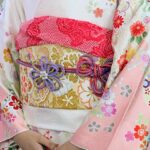
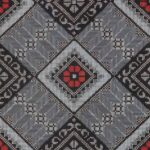
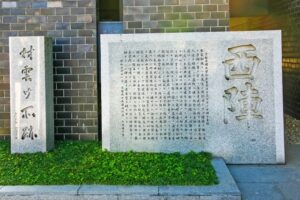

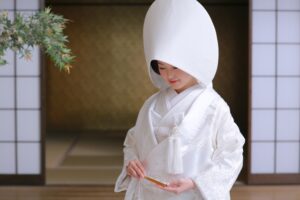
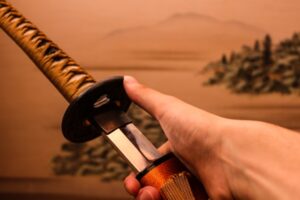
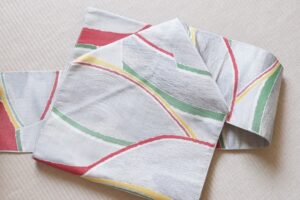
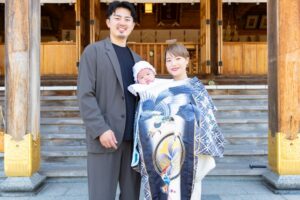
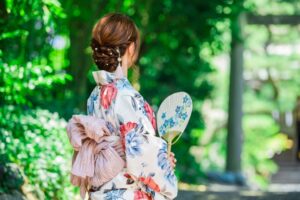
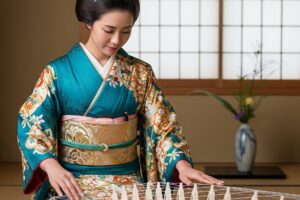
コメントを残す